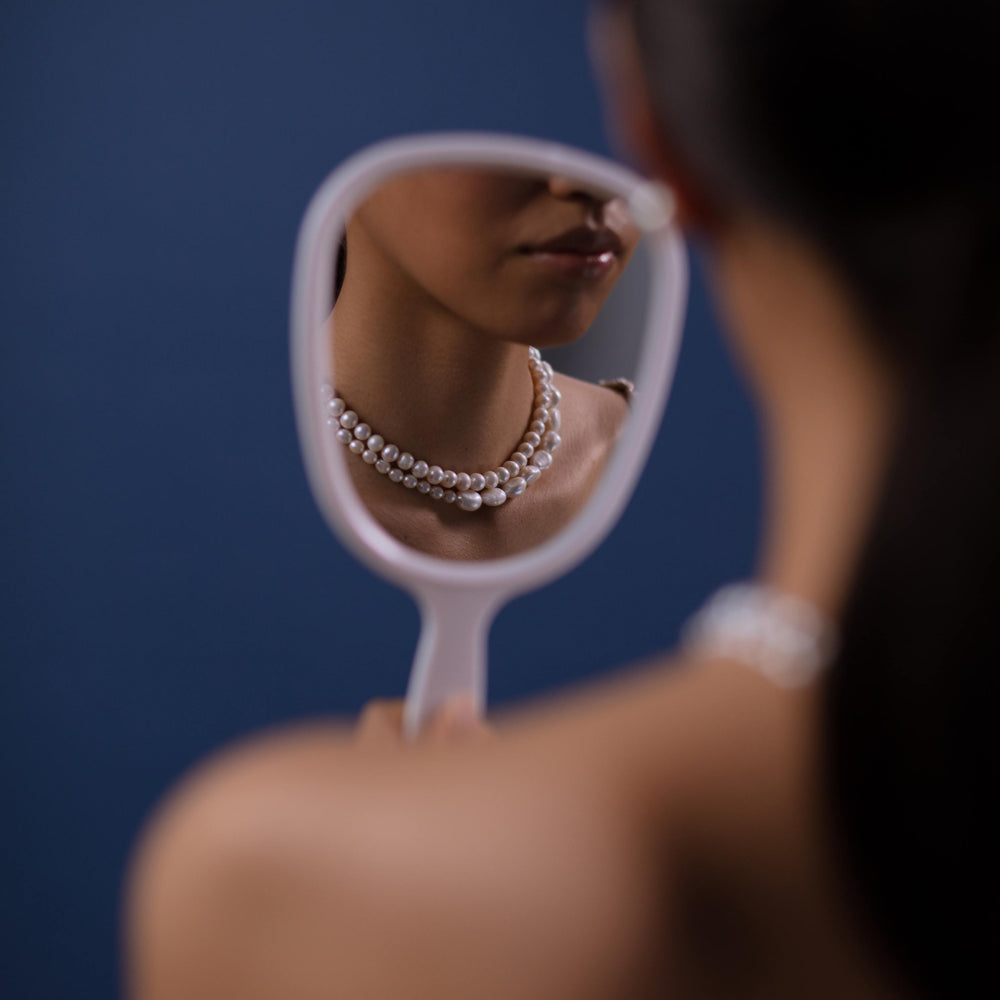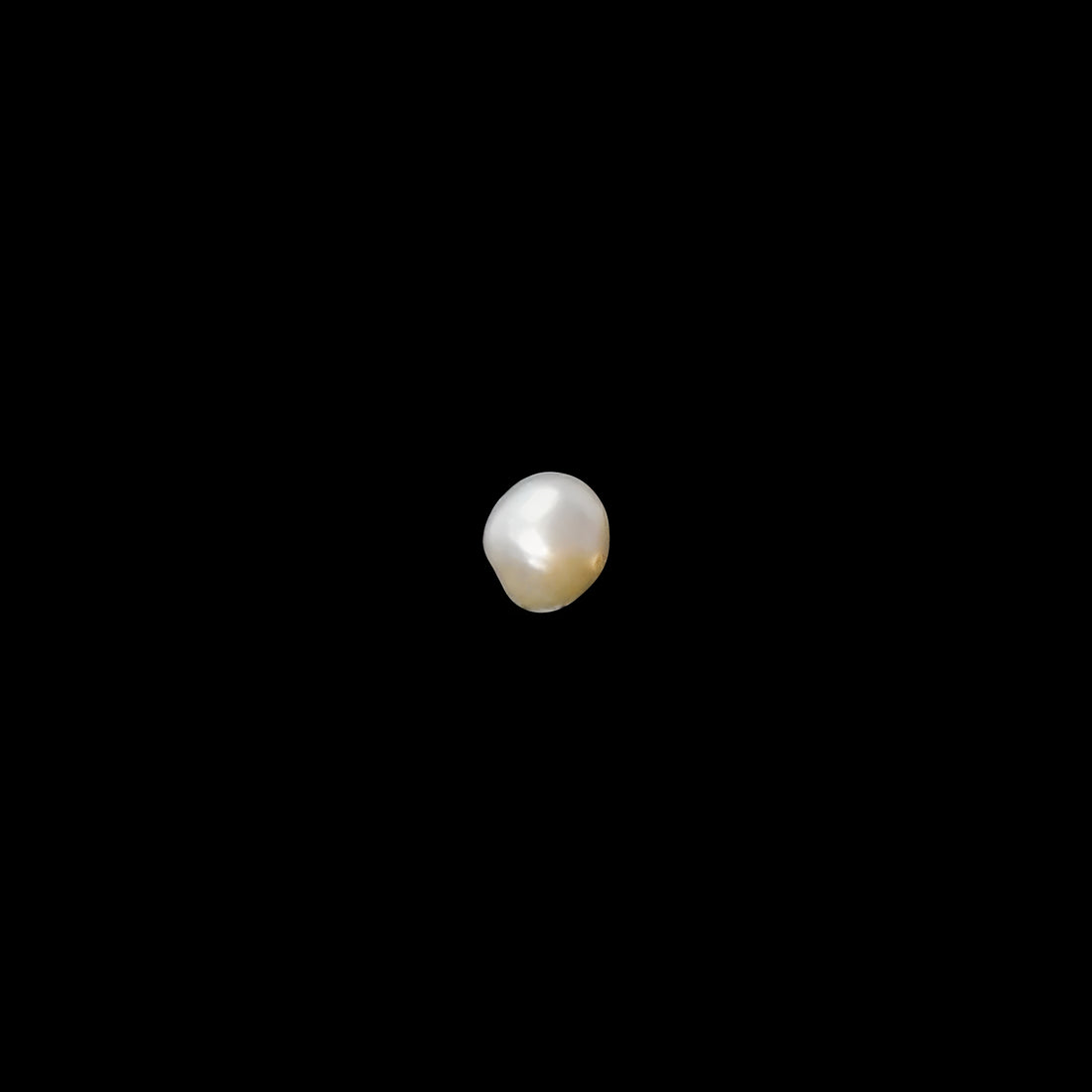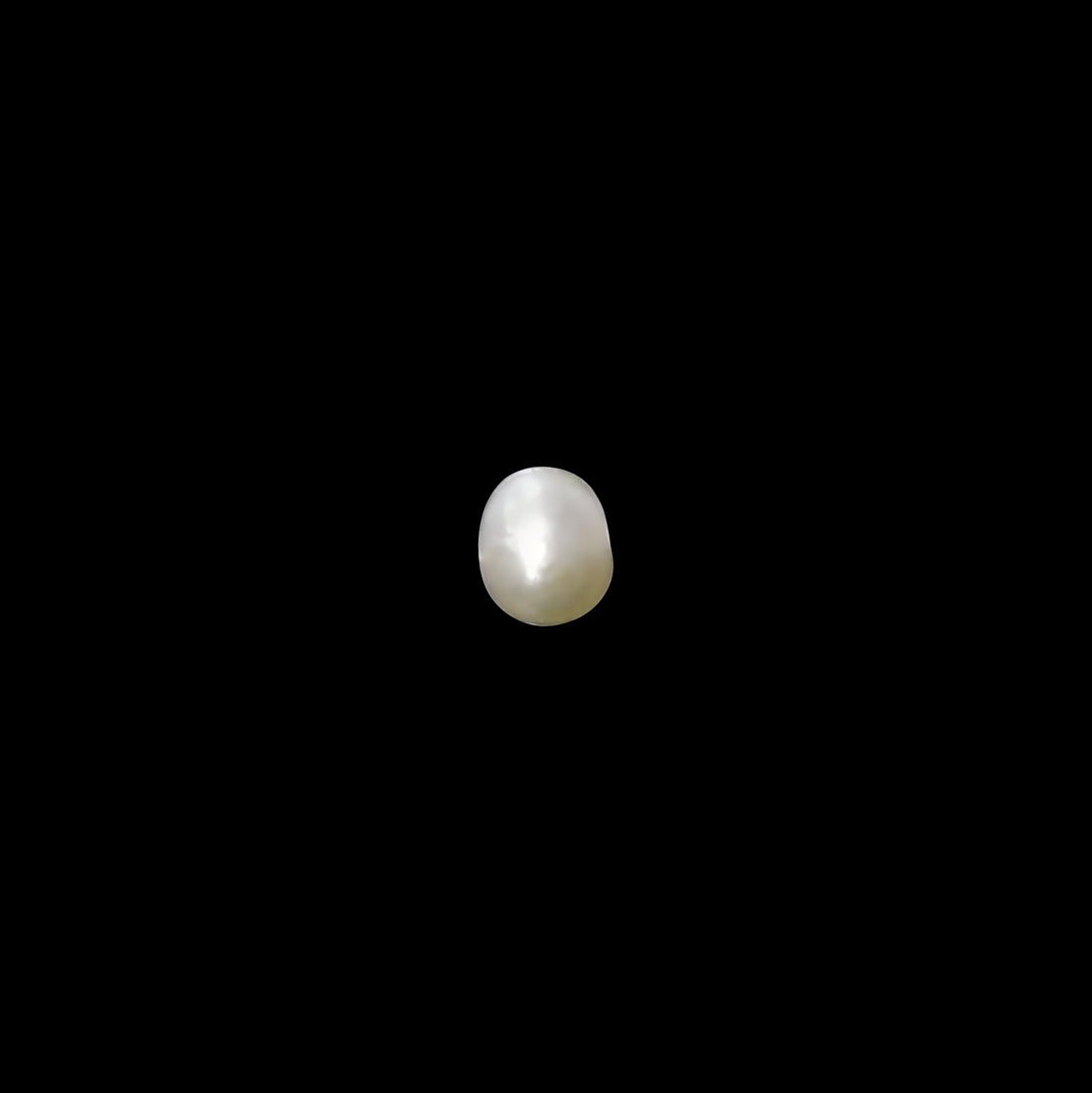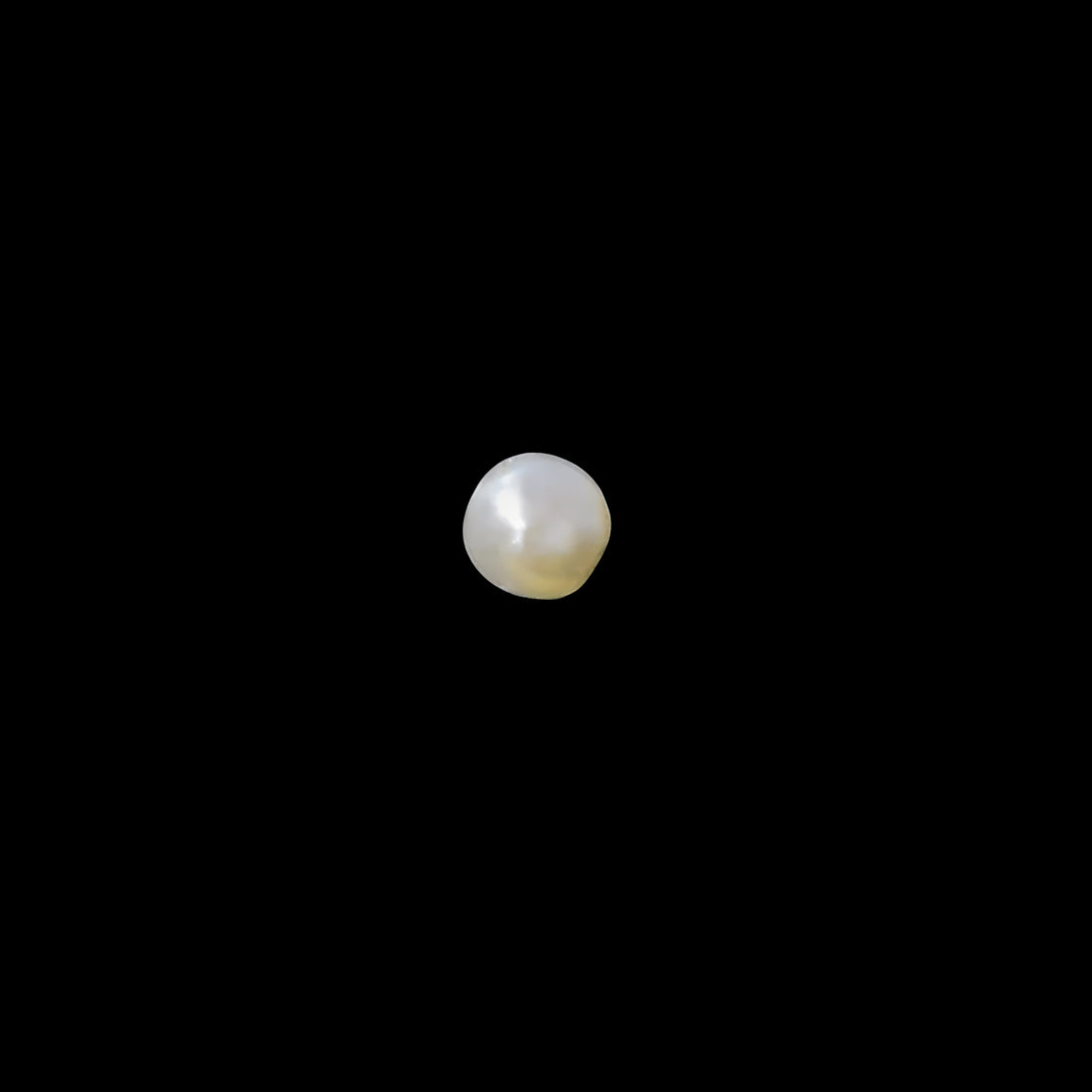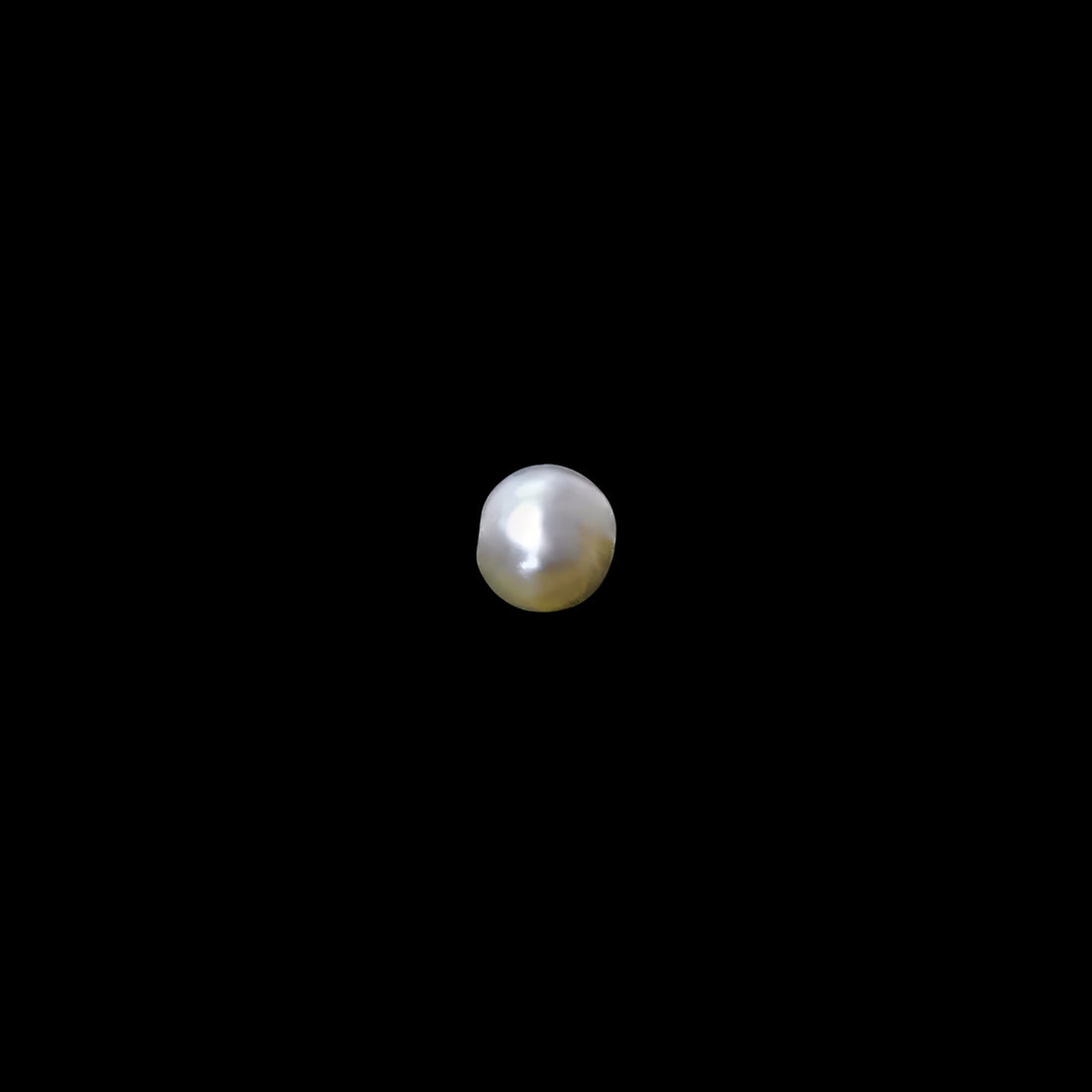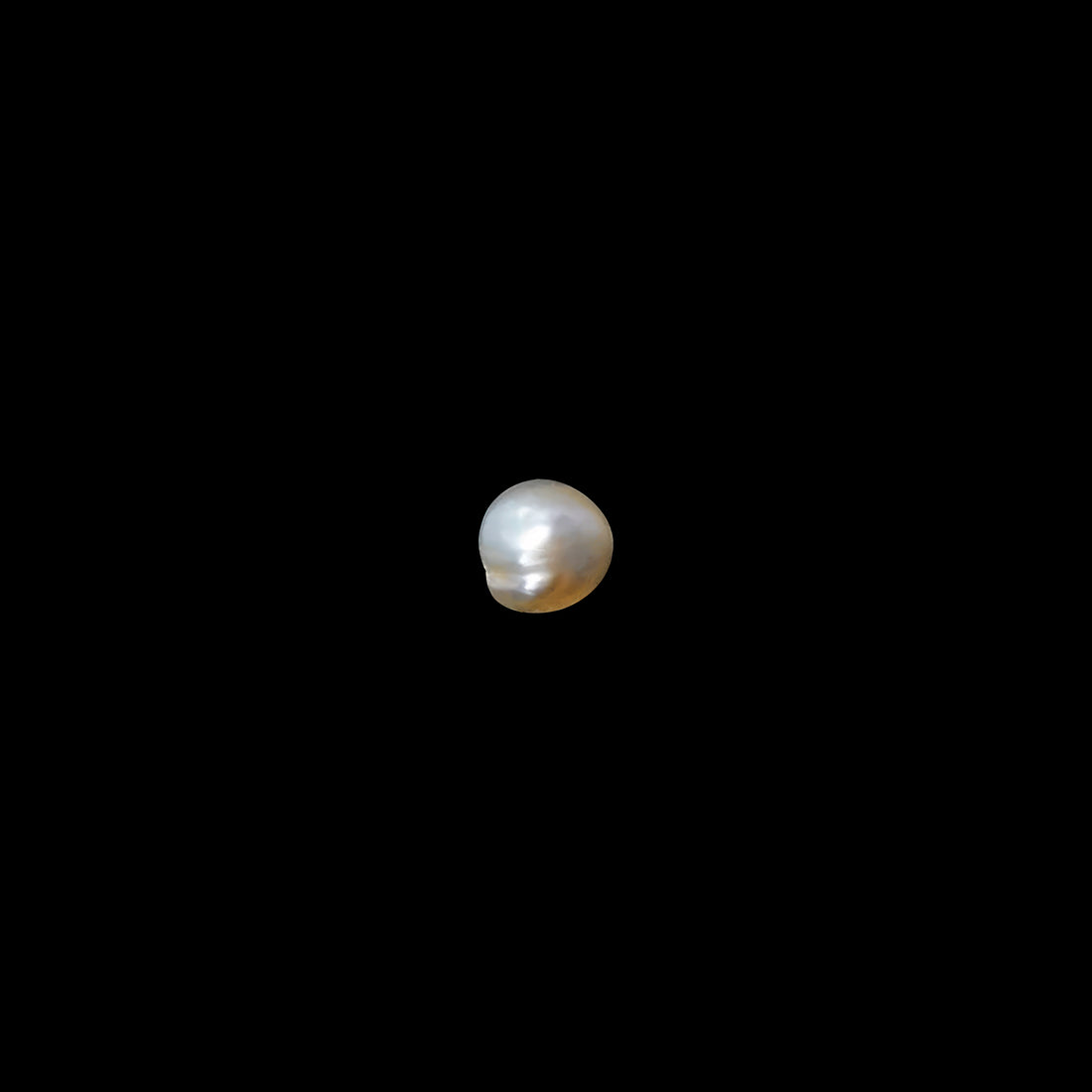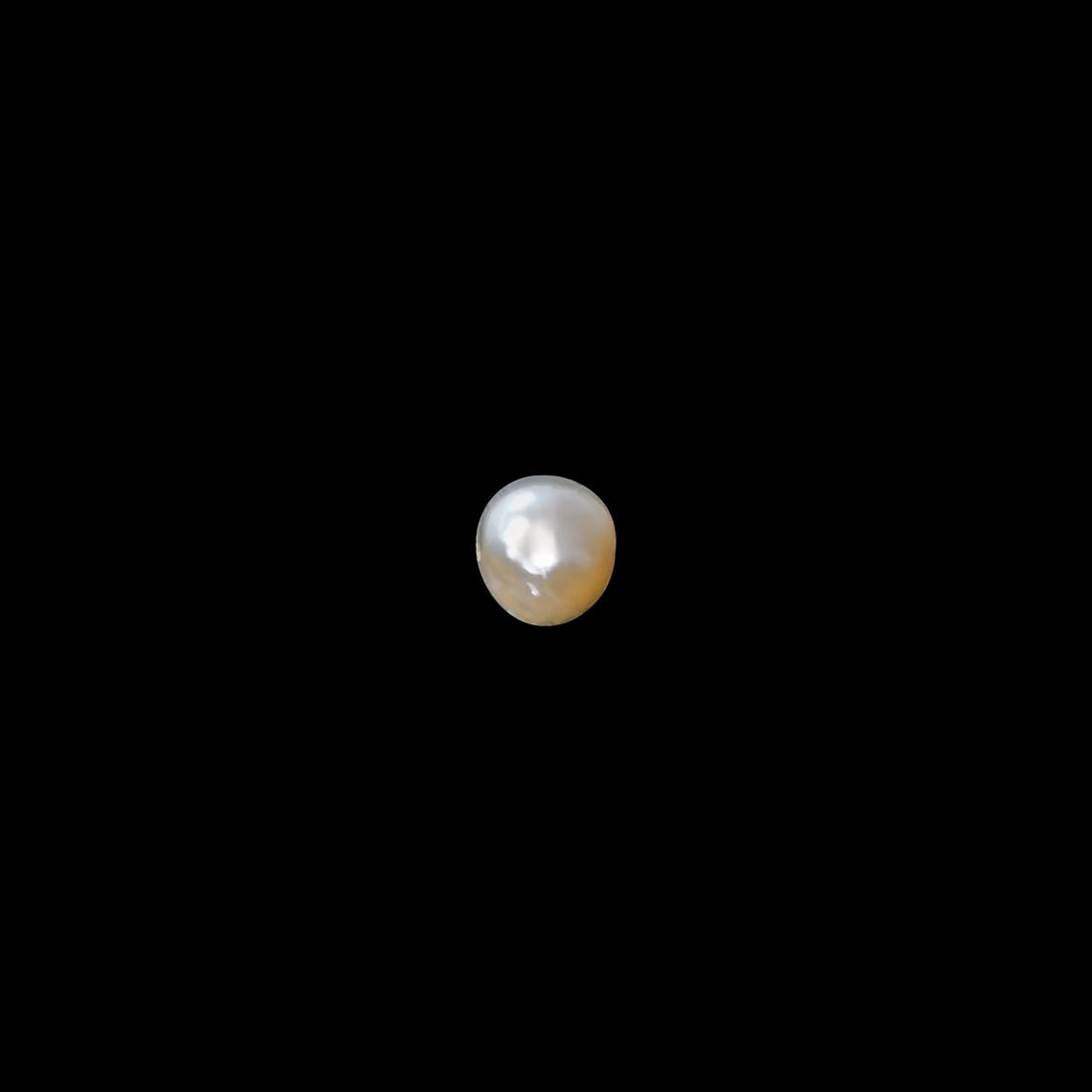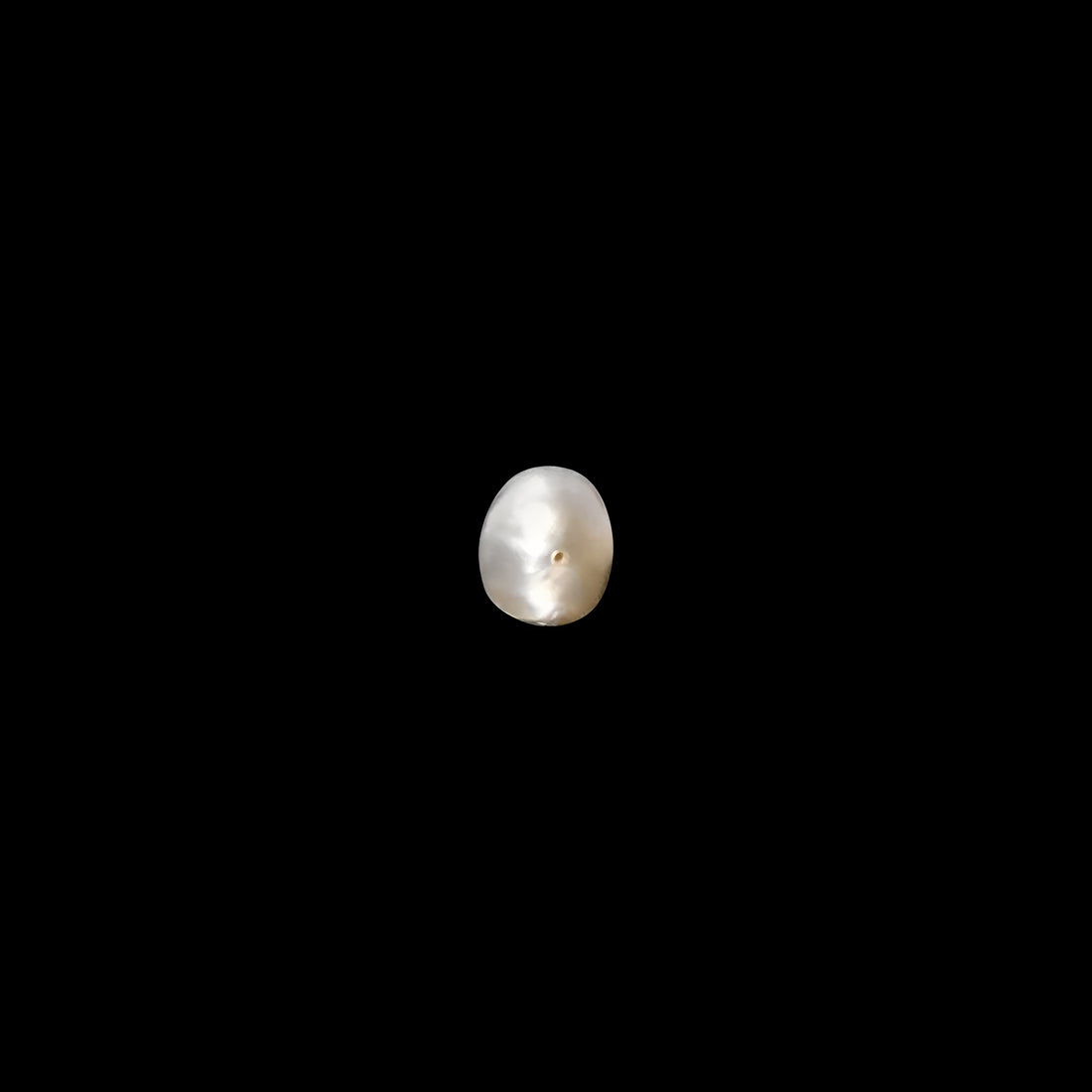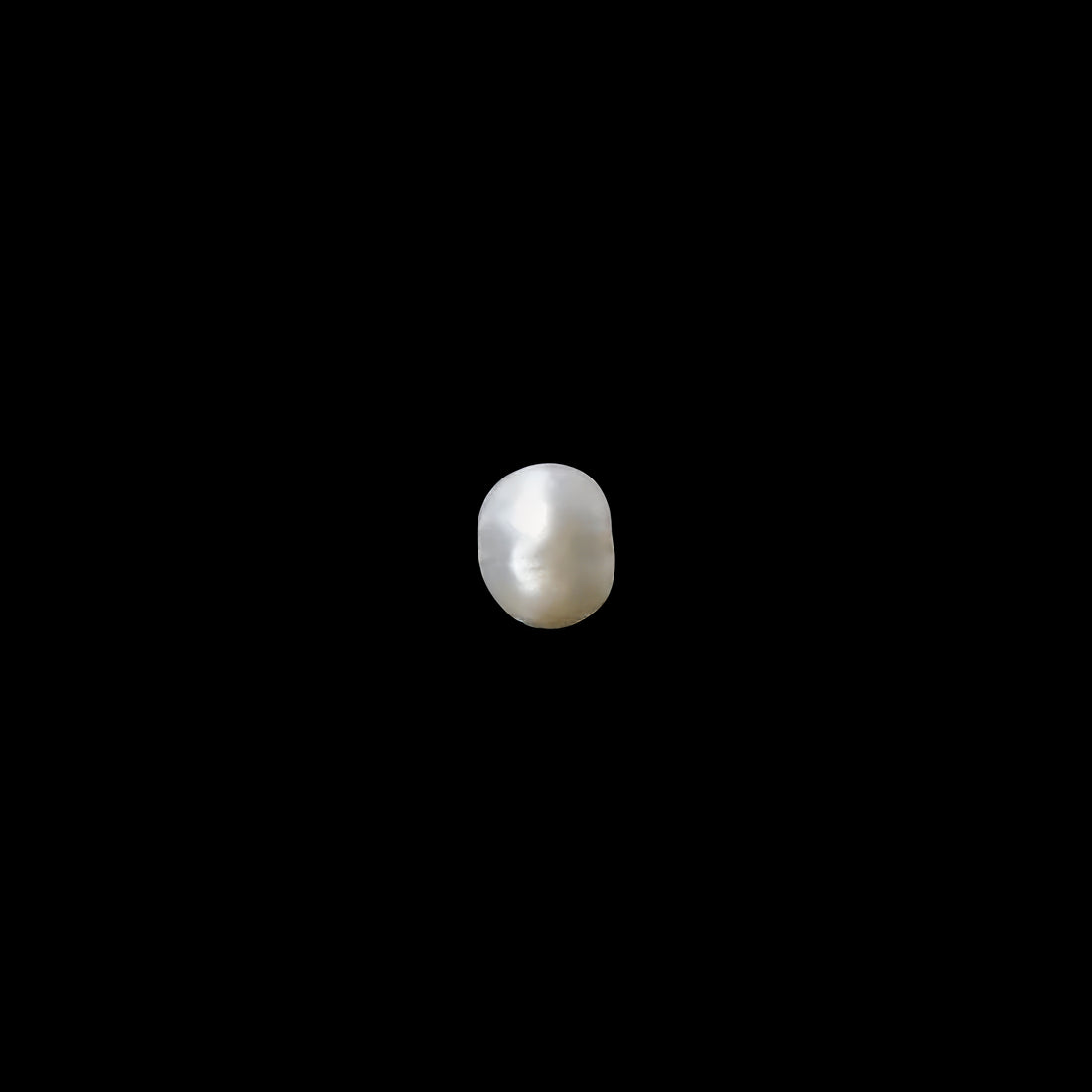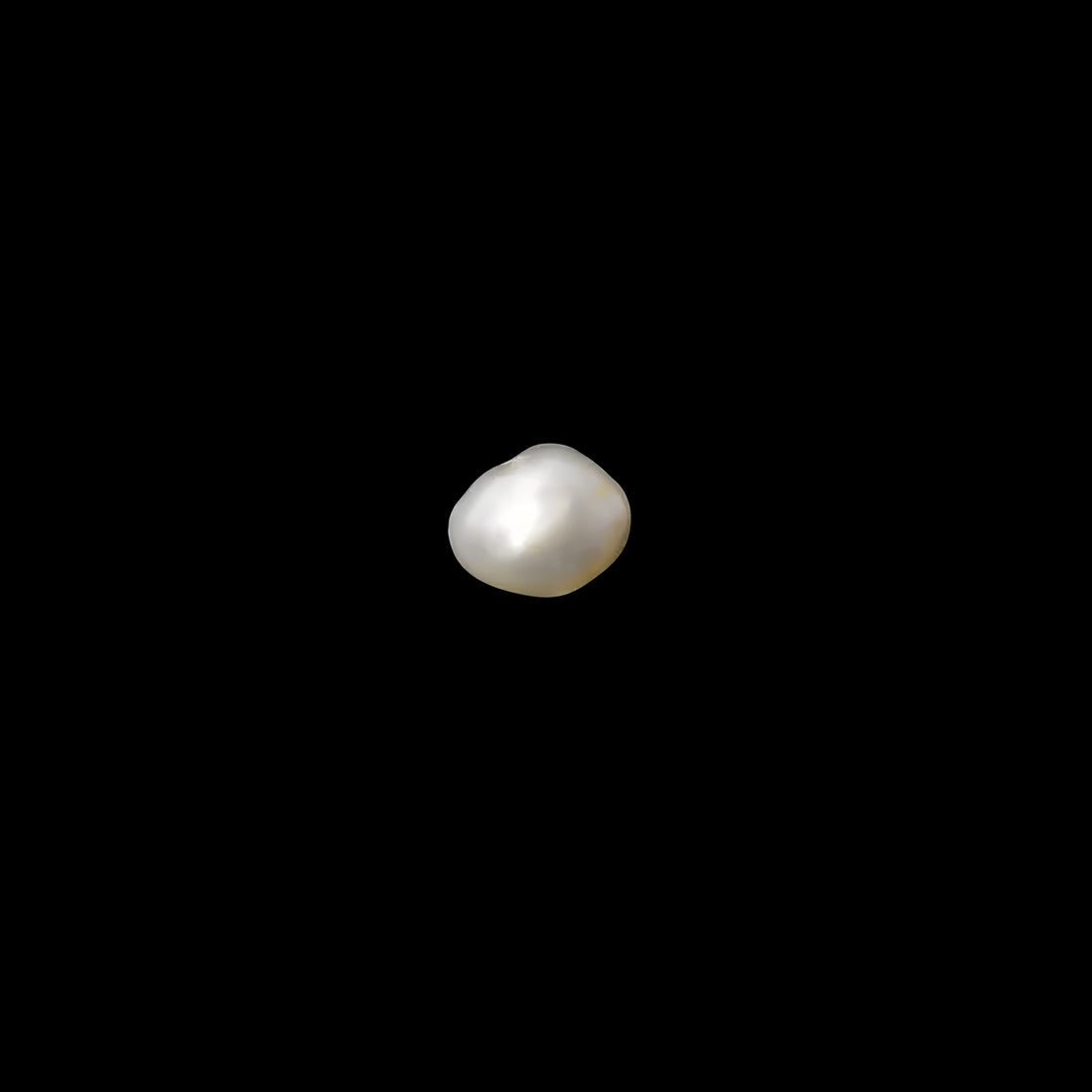This article serves as part of an ongoing series of profiles on the different varieties of precious & semi-precious gemstones. To view the entire list, click here.
Pearls - popularly known as Moti in India, stand out as a special category of gemstones for 2 reasons. First, they are among the only category of gemstones, other than precious red corals, that are found underwater, as opposed to all other gemstones such as rubies, sapphires, emeralds, etc. which are mined from within the surface of the Earth. Second, pearls are actually organic gemstones and are non-minerals – meaning that they are produced by living organisms that thrive underwater.
Fun fact: The largest pearl ever discovered is the “Pearl of Puerto” – which was accidentally found by a Filipino fisherman in 2006 on Palawan Island, Philippines. This pearl, nearly 2 feet long and weighing in at about 34 kg (75 lb), was kept hidden by the fisherman since he believed it brought him good luck. It was finally unveiled in 2016 and has been valued at about $100 million.
 Pearl of Puerto - the world’s largest pearl, weighing in at 34 kg (75 lb)
Pearl of Puerto - the world’s largest pearl, weighing in at 34 kg (75 lb)
1. Pearls - Formation & Classifications
Pearls make for a rather unique category of gemstones, as they are the only type of gemstones, other than corals, that are organically formed within living organisms. The process of the formation of a Moti begins when an irritant, such as a grain of sand or a parasite, finds its way into the soft tissues of certain molluscs, such as oysters and mussels. Contrary to popular belief, the irritant is not always a pearl-sized object, but is usually as tiny as a grain of sand. The mollusc’s response to this irritant is actually what results in the creation of a beautiful pearl.
To protect themselves from the foreign intruder, these molluscs secrete a substance called nacre, also known as “mother-of-pearl”, from special cells in their mantle tissue. Nacre is composed of microscopic crystals of calcium carbonate, which are arranged in layers. Layer upon layer of nacre is deposited around the irritant, creating a pearl over time. The quality and size of a moti are influenced by various factors, including the type of mollusc, the water quality, and the surrounding environmental conditions.
Broadly speaking, there are generally 3 categories of pearls available in the market today:
- Natural Pearls: These are formed without human intervention, and are exceedingly rare and highly valued. They are the result of a fortuitous event in nature. These pearls are often irregularly shaped and come in a range of colours, from white and cream to pink, blue, and even black. Natural pearls are also often called Basra pearls in the trade, owing to the fact that most natural pearls have originated in the Persian Gulf. Of all the pearls available in the market today, only about 1% are natural. Since these pearls are naturally formed, they do not consist of a nucleus.
- Cultured Pearls: Cultured pearls, on the other hand, are created through a deliberate process. Pearl farmers carefully introduce an irritant, such as a minute bead or piece of tissue, into a mollusc, which in turn stimulates the pearl formation process of the mollusc. This technique allows for controlled cultivation and the production of pearls with more consistent shapes, sizes, and colours. 99% of the pearls available today are cultured, and since these are created due to a man-made impregnation of an oyster, these also consist of a nucleus.
- Keshi Pearls: Keshi pearls are an interesting category of pearls because they’re somewhat of a hybrid between natural and cultured pearls. The reason for this is that Keshi pearls are formed as a by-product of cultivated pearls. When a foreign material or irritant is injected into an oyster or a mollusc, it secretes nacre around the irritant which forms into a pearl. However, as a response to this, certain molluscs also end up producing a pearl adjacent to the irritant – which results in the creation of Keshi pearls. As such, Keshi pearls do not have a nucleus, and can somewhat be considered a hybrid between cultivated and natural pearls.
Pearls can also be classified according to the kind of waters they are harvested from:
- Freshwater Pearls: Freshwater pearls are formed in freshwater molluscs, specifically freshwater mussels. These mussels are typically found in rivers, lakes, and ponds. Unlike saltwater pearls, which are usually created one at a time, freshwater mussels can produce multiple pearls in a single shell. Freshwater pearls are known for their unique shapes and sizes, ranging from round to baroque (irregular shape). They come in a wide variety of colours, including white, pink, and peach. The nacre (pearl coating) of freshwater pearls is usually thick, which contributes to their durability and lustre. Due to their abundance and affordable price range, freshwater pearls are a popular choice for both casual and formal jewelry. Currently, China is the most abundant source of freshwater pearls, and virtually all freshwater pearls come from China.
- Saltwater Pearls: Saltwater pearls are formed in saltwater molluscs, primarily oysters. These oysters are typically found in oceans and seas, including the Persian Gulf, the South Pacific, the Gulf of Mexico, and the coasts of Japan and Australia. Saltwater pearls are generally formed one at a time inside the oyster, resulting in a more limited supply compared to freshwater pearls. They are known for their exceptional lustre, smoothness, and spherical shape, which is highly valued in the jewelry industry. Saltwater pearls come in a range of colours, including white, cream, pink, silver, and golden hues. They are often associated with high-end jewelry due to their scarcity and historical significance. Notable types of saltwater pearls include Akoya pearls, South Sea pearls, and Tahitian pearls, each with its own set of unique characteristics and origins.
 Freshwater Pearls in an Oyster
Freshwater Pearls in an Oyster
2. Where Are Pearls Found?
Now that we’ve covered precisely how pearls are formed and what types there are, it also makes sense to understand the geography of where pearls are produced and farmed. The specific location of a pearl’s formation determines its quality, rarity, and overall appeal.
In general, pearls of varying quality are found across the globe. Among the most popular sources of origin are:
- Japan (Akoya/Keshi; Cultivated): Akoya pearls are renowned for their classic white appearance and exceptional lustre. These pearls are mainly cultivated in Japan, with the majority of production concentrated in regions such as Hiroshima and Nagasaki. Japanese Akoya pearls are highly regarded for their round shape, smooth surface, and vibrant lustre. They are often used in traditional and elegant moti jewelry pieces, including necklaces, earrings, and bracelets.
- Tahitian Pearls (Cultivated): Tahitian pearls, often referred to as black pearls, are highly sought after for their dark and lustrous colours. They are primarily found in French Polynesia, specifically in the waters surrounding the islands of Tahiti. These pearls come in a range of hues including black, grey, green, blue, and peacock, with overtones of pink, purple, or blue. The unique and diverse colours of Tahitian pearls make them a captivating choice for jewelry.
- South Sea (Cultivated): South Sea pearls are renowned for their large size, exquisite lustre, and creamy white to golden hues. They are primarily sourced from the pristine waters of Australia, Indonesia, and the Philippines. Australian South Sea pearls are highly valued for their exceptional quality and are harvested off the northern coast. Indonesian pearls, particularly from the waters of Bali and Lombok, are known for their natural colours and unique overtones. The Philippines is also a significant producer of South Sea pearls, with the Palawan region being particularly famous.
- China (Cultivated): China is the leading producer of freshwater pearls, accounting for a significant portion of the global supply. Regions like Jiangsu and Zhejiang are well-known for their freshwater pearl farms. These Chinese pearls are majorly cultivated as Freshwater pearls, and occur in a wide range of colours, including white, pink, lavender, and peach. They are often more affordable compared to saltwater pearls and offer versatility in jewelry design.
- Persian Gulf (Natural): Gulf pearls, commonly known as Basra pearls, have a rich history but are now considered rare due to over-harvesting and pollution in the Persian Gulf. In the past, countries such as Bahrain, Kuwait, and Iraq were known for their natural pearl diving industries. The natural pearls found in the Gulf region were highly prized for their unique beauty and orientation. While natural Gulf pearls are scarce today, they hold a special place in the history of pearl cultivation.
 The different types of Pearls
The different types of Pearls
Each of these pearl-producing regions offers its own set of distinct characteristics and qualities, making pearls from different origins highly sought after by jewelry enthusiasts and collectors worldwide.
3. The Colours of a Pearl
Pearls occur in a wide array of colours as well as qualities – depending on the region from which they’re harvested. Their colour palette is as diverse as the regions they come from. South Sea pearls, sourced from Australia, Indonesia, and the Philippines, captivate with creamy white to golden hues. Tahitian pearls, found in the waters surrounding Tahiti, boast striking black, grey, green, and peacock shades, adorned with captivating overtones. Akoya pearls from Japan showcase a classic white appearance, known for their radiant lustre. Freshwater pearls cultivated in China's lakes and rivers offer a vibrant array of colours, including white, pink, lavender, and peach. Each region's pearls possess their own distinct charm, making them a prized choice for exquisite jewelry creations.
 The colour span of Pearls (Source: Diamond Buzz)
The colour span of Pearls (Source: Diamond Buzz)
4. Common Treatments & Enhancements of Pearls
Unlike other gemstones such as rubies, emeralds, or sapphires – pearls are opaque. As such, the treatments done to these other stones that require an enhancement of their clarity and transparency, do not apply to pearls. However, there are certain enhancements that a moti may undergo to enhance its colours or to make the surface of its skin smoother. Some of the most common treatments that pearls undergo, are listed below.
- Pearl Bleaching: Pearl bleaching is a commonly employed treatment that enhances the pearl's colour and lustre. By subjecting pearls to a controlled bleaching process, their natural colour can be lightened or altered. This treatment helps in achieving consistent colouration across a pearl strand, making them more visually appealing. It is important to note that bleaching is a standard practice in the pearl industry and does not compromise the overall quality or value of the pearls.
- Pearl Dyeing: Dyeing is another treatment method used to enhance the colour of pearls. Through this process, pearls can be transformed into vibrant shades such as black, blue, pink, or green. Dyeing can create a striking visual impact, allowing jewelry designers to offer a wide range of colour options to suit different tastes and fashion trends. It is crucial to disclose the dyeing treatment to maintain transparency and enable customers to make informed purchasing decisions.

Dyeing of Freshwater Pearls
- Pearl Irradiation: Irradiation is a treatment technique that involves exposing pearls to radiation to alter their colour. This process can produce unique and captivating hues, such as vibrant blues, greens, or purples. Irradiated pearls undergo subsequent heat treatment to stabilize and fix the new colour. It is essential to note that irradiated pearls are safe to wear and do not pose any health risks.
- Pearl Coating: Pearl coating, also known as nacre coating, is a treatment method that enhances the lustre and surface appearance of pearls. A thin layer of a special coating material, such as silicone or resin, is applied to the pearl's surface to create a smooth and glossy finish. This treatment can improve the pearls' overall lustre and mask surface imperfections, resulting in a more visually appealing product. However, it is important to disclose the presence of coating to ensure transparency in the marketplace.
- Pearl Polishing: Polishing is a common enhancement technique used to refine the surface of pearls. Through this process, any minor surface irregularities or blemishes are removed, resulting in a smoother and more flawless appearance. Pearl polishing enhances the pearls' lustre and brilliance, making them highly desirable in the jewelry industry. This treatment does not alter the pearls' structure or compromise their authenticity.
| Mineral | Non-mineral/Organic – composed of Calcium Carbonate |
|---|---|
| Colour Span | White, Cream, Pink, Golden, Grey, & Black |
| Popular Types | Basra (Natural), Keshi, South Sea, Freshwater (Chinese), & Tahitian |
| Mohs Hardness | 2.5 (on a scale of 10) |
| Common Treatments | Dying & coating, bleaching, irradiation |
| Birthstone | June |
Pearls (Moti) - A Quick Snapshot
6. Evaluating the Quality of a Pearl
When it comes to purchasing a pearl, understanding the key factors that determine its quality is essential. However, since pearls are quite different from conventional gemstones such as rubies, sapphires, and emeralds, applying the 4Cs of quality determination does not make sense. Further, there is also no globally accepted standard of determining the quality of a pearl. However, the following is a list of some important pointers that one should keep in mind in order to evaluate the quality of a pearl:
- Pearl Type: The type of a moti can greatly impact its quality and value. Natural pearls, formed without human intervention, are rare and highly prized. Cultured pearls, on the other hand, are created with human assistance, making them more readily available. Within cultured pearls, there are different types, including Akoya pearls, South Sea pearls, Tahitian pearls, and freshwater pearls. Each type has its characteristics, such as size, lustre, and colour. Consider the unique attributes of each pearl type and choose the one that aligns with your preferences.
- Lustre: Lustre refers to the glow or radiance that emanates from the surface of a pearl. It is one of the most critical factors in determining a pearl's quality. High-quality pearls exhibit a deep, reflective lustre, often described as a mirror-like or satin-like sheen. When assessing lustre, look for pearls that reflect light evenly and possess a bright, glowing appearance. Avoid pearls with a dull or chalky lustre, as they may indicate lower quality.
- Surface Quality: The surface quality of a pearl plays a significant role in its overall appeal. Examine the pearl's surface for blemishes, spots, cracks, or other imperfections. The ideal moti should have a smooth, unblemished surface with minimal visible flaws. However, it is important to note that natural pearls may have slight surface irregularities, adding to their uniqueness and character. Pearls with a clean and flawless surface are generally considered of higher quality.
- Shape & Size: Pearls come in various shapes and sizes, each with its distinct charm. Common pearl shapes include round, near-round, oval, button, drop, baroque, and semi-baroque. Round pearls are highly valued due to their symmetrical and classic appearance. However, pearls in non-round shapes can also be exquisite and offer a unique allure. When evaluating shape, look for well-defined contours and consistent proportions. As for size, larger pearls are often more valuable, but personal preference and budget also play a role in the selection process.
- Colour: Colour is an essential factor in evaluating pearl quality. Pearls come in a variety of colours, ranging from white and cream to pink, lavender, golden, black, and everything in between. When examining the colour of a pearl, consider its hue, tone, and saturation. Look for pearls with consistent and evenly distributed colour throughout the gem's surface. Highly valued pearls often display vibrant, rich, and naturally occurring colours.
 The different qualities of a Pearl’s lustre (Source: Maleny Jewellers)
The different qualities of a Pearl’s lustre (Source: Maleny Jewellers)
7. How Much Do Pearls Cost?
The price range for a moti varies significantly due to the extensive array of qualities and types available in the market. In general, all cultivated pearls are usually cheaper than Natural (Basra) pearls, since the latter are extremely rare and are not harvested any longer.
Among the cheapest type of pearls are the Chinese freshwater pearls. Since these are abundantly harvested in China, they cannot be considered rare. Such Chinese pearls cost between $1 - $5 per carat. South Sea Pearls are also relatively abundantly harvested, and can cost in the range of $5 - $20 per carat. Keshi pearls, as a hybrid between natural and cultivated pearls, are of a higher quality and can range from $30 - $100 per carat. Finally, the most expensive variety of pearls are those that are natural (Basra), and formed without any human intervention. These Basra pearls begin from about $200 per carat, and there is no upper limit.
Do note, however, that the prices mentioned above are approximate. The prices may vary depending on the characteristics of each particular specimen, the geography of its sale, and other similar factors.
8. Pearls in Astrology
Pearls have held a special place in astrology throughout history. In cultures such as India and Persia, pearls were considered powerful gemstones with profound influences on planetary energies. Ancient texts and scriptures, including the Garuda Purana, highlight the connection between pearls and the Moon, emphasizing their ability to balance emotions and enhance intuition, making them highly sought-after for their astrological properties.
 Pearls (Moti) in Astrology
Pearls (Moti) in Astrology
As the gemstone of the Moon, pearls are the birthstone for the month of June, and are associated with the Zodiac sign of Cancer. In general, they are believed to offer the following benefits in astrology:
- Enhanced Health Benefits: Pearls are believed to provide various health benefits, including improved eye health, radiant skin, and a healthy heart. Their natural properties are associated with promoting clear vision, enhancing skin complexion, and supporting cardiovascular well-being.
- Strengthened Relationships: Pearls have a special connection to nurturing qualities and are believed to strengthen relationships, particularly maternal bonds. Wearing pearls can enhance maternal instincts, foster emotional closeness, and promote a deeper sense of love and care.
- Mental Clarity & Intuition: Pearls are known for their association with intuition and mental clarity. Wearing pearls can amplify intuitive abilities, enabling individuals to trust their instincts and make well-informed decisions. Pearls are believed to clear mental fog and enhance focus, allowing for sharper thinking and improved cognitive function.
- Inner Peace & Emotional Balance: Pearls are renowned for their calming and soothing properties. Wearing pearls can bring a sense of inner peace and emotional balance, reducing stress and anxiety. By promoting a harmonious emotional state, pearls help individuals navigate life's challenges with greater resilience and tranquillity.

